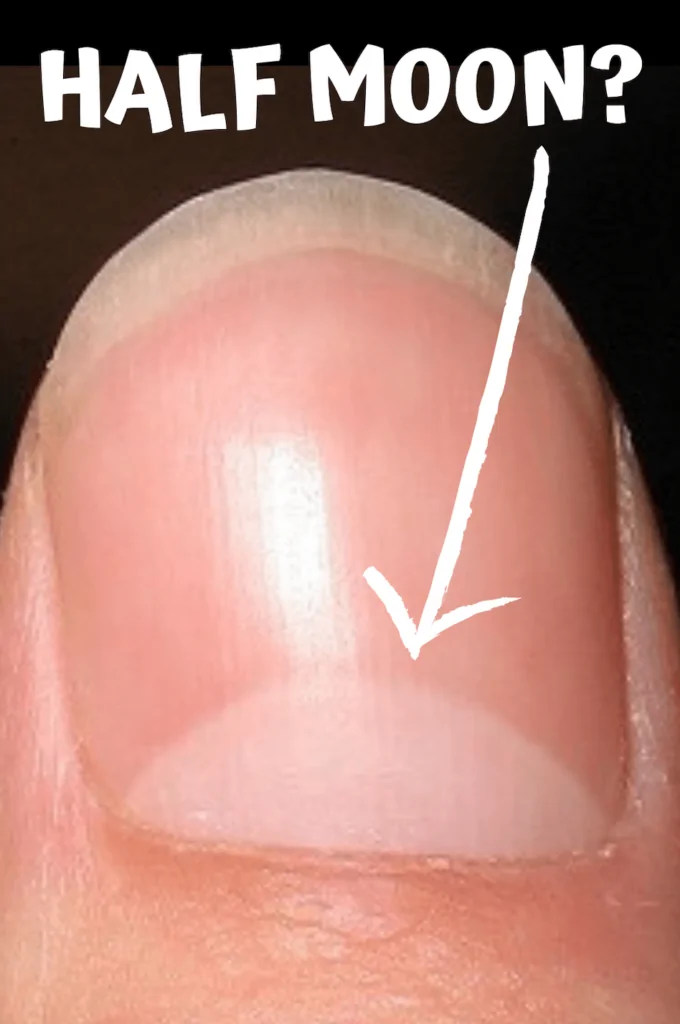The Importance of Fingernail Health: Understanding the Messages Your Hands SendRegarding health, most people overlook the link between their fingernails and illness. However, paying attention to your fingernails can provide vital insights into your overall health and even serve as an early warning sign of potentially deadly infections.
Scrutinize your nails for a few moments. Examine every detail with your hand about a foot away from your face, level with your nose.
Examine your nails for evidence of breakage or chipping and their thickness or thinness. Look for ridges, grooves, dips, and curves. Please take notice of the skin color beneath the nail, the skin around the nail, and the nail itself. Consider whether this is how your nails have always appeared.

Changes in your fingernails can be connected to the onset of numerous diseases. Therefore, it is critical to keep track of any new developments.
Pink nails with a tinge of pinkish white (moons) at the base usually suggest good health. If your nails are smudged with multiple colors or have a dull tone, this could indicate an undiscovered health problem. Green nails, for example, may suggest the presence of bacteria, whereas red streaks in the nail bed may signal a heart valve infection. Blueish nails may indicate insufficient blood oxygen levels, whereas dull nails may indicate a vitamin deficiency. Terry’s nails have dark streaks at the top of the nails that are connected with age and congestive heart failure. White nails, on the other hand, could indicate a liver disorder such as hepatitis. As a result, paying close attention to the color of your nails can reveal necessary information about potential health issues.
Thickened Nails: While strong nails are ideal, excessive thickness resembling talons or claws may signal an underlying health issue. Thickened nails might be a sign of a lung or fungal infection. If you observe your nails becoming thicker, this should be a warning sign to look into other health issues that may have been overlooked. Thick, separated nails can also indicate thyroid disease or psoriasis. Furthermore, be wary of allergic reactions to new medications, as unusually thick nails may be a symptom of such responses.
Broken or Split Nails: Split or broken nails are not usually the consequence of minor chipping or accidents. They may instead appear to peel off in layers. It is vital not to blame everything on frequent hand washing or nail paint, especially since folic acid, vitamin C, and protein shortages can cause split nails. According to WebMD, Psoriasis, which affects the nails in 10% of instances, can also cause nail splitting. Furthermore, split nails may indicate chronic malnutrition.
Taking action to improve your general health, such as eating a well-balanced diet, can help you tackle this problem. Investigating the link to psoriasis is also critical.Spoon-Shaped Nails: If your nails are soft, curved upward, and large enough to hold water like a spoon, this could signal several underlying issues. Spoon nails are frequently linked to iron-deficient anemia. They are also connected to heart disease, hyperthyroidism, and hemochromatosis, a liver disorder characterized by excessive iron absorption. Addressing your health issues can frequently result in the reversal of spoon-shaped nails.Pitted Nails: Little dips or holes in your nails may result from trauma or indicate that you should pay more attention to your health. Pitting in the nails has been linked to connective tissue disorders, psoriasis, alopecia areata (an autoimmune ailment that causes hair loss), and zinc deficiency. By analyzing the pattern, you can tell the difference between actual, long-lasting pits and natural dents and dings. Pits produced by disease tend to stay, whereas transient pits created by environmental sources fade quickly.Ridge Lines: Nails should ideally have flat surfaces with barely noticeable lines. Ridge lines can be an indication that something is wrong with your body. Thick ridge lines have been associated with lupus (when accompanied by red streaks at the base of the nails), iron deficiency, and inflammatory arthritis. Instead of just buffing away the ridges, it is critical to heed their warning and look into underlying health issues.Brittle, Dry Nails: If your nails are dry and brittle, moisturizers and cuticle oil may not be enough. According to the American Academy of Dermatology, approximately 12% of Americans have a fungal infection that causes their nails to dry or crumble. Examine your hormone levels and bacterial health, as both might contribute to this illness. Thyroid dysfunction can also cause brittle, dry fingernails that break and split easily. It takes time to treat thyroid and fungal issues, and it may take a whole growth cycle to notice visible improvements in the appearance of your nails.Clubbed Nails: If your nails swell over the nail bed, causing the skin to appear “clubbed,” or if your nails have puffed up around your fingers, this could indicate underlying health issues. Clubbed nails have been linked to lung problems, particularly if you already have respiratory issues. They can also be associated with IBS, AIDS, or liver illness. While clubbed nails are not conclusive evidence of these diseases, they should not be overlooked and may necessitate medical treatment.Finally, it is critical not to dismiss the indications your hands and fingernails are sending regarding your health. By inspecting your nails frequently, you can proactively protect your health. Remember to compare any changes you see to the probable health risks listed. By remaining watchful and observant, you can better understand the delicate relationship between your fingernails and general health, allowing you to live a healthier and more educated life.








